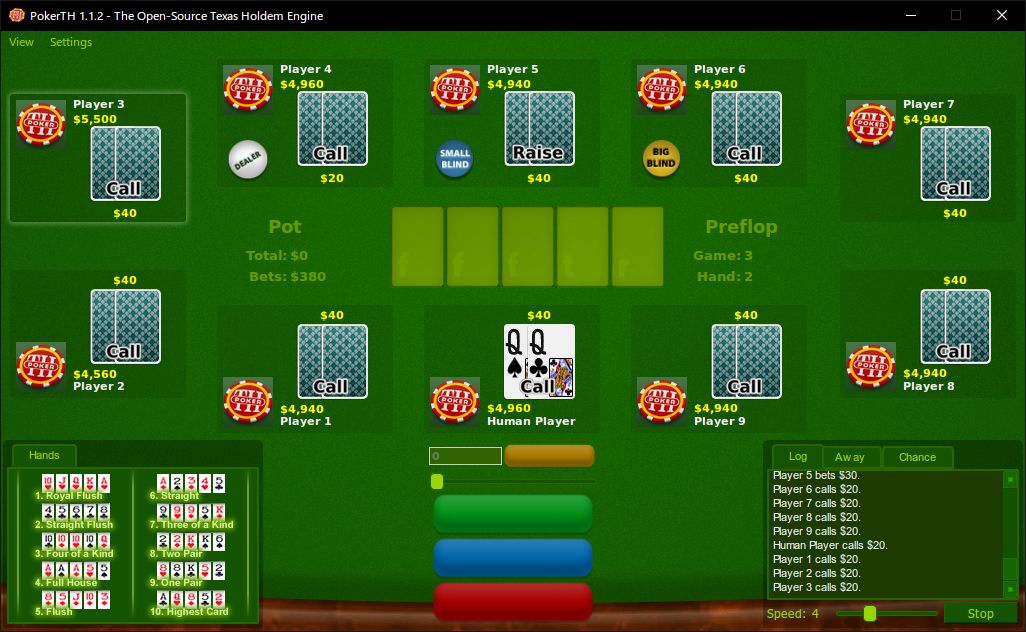
The structure in the conversation is re-introduced by the soapboxes.

#Pokerth discussion picture not showing software
When teams are not in the same geographical locations, collaborative software over the internet can be used as replacement for physical cards. "Throwing a king" ends the discussion of the item for the current sprint. Where king means: "this item is too big or too complicated to estimate". Alternatively standard playing cards of Ace, 2, 3, 5, 8, and king can be used. The reason for not exactly following the Fibonacci sequence after 13 is because someone once said to Mike Cohn "You must be very certain to have estimated that task as 21 instead of 20." Using numbers with only a single digit of precision (except for 13) indicates the uncertainty in the estimation. Several commercially available decks use the sequence: 0, ½, 1, 2, 3, 5, 8, 13, 20, 40, 100, and optionally a ? (unsure), an infinity symbol (this task cannot be completed), and a coffee cup (I need a break, and I will make the rest of the team coffee). A task that is about twice as much effort as a 5, has to be evaluated as either a bit less than double (8) or a bit more than double (13). The reason for using the Fibonacci sequence instead of simply doubling each subsequent value is because estimating a task as exactly double the effort as another task is misleadingly precise. A typical deck has cards showing the Fibonacci sequence including a zero: 0, 1, 2, 3, 5, 8, 13, 21, 34, 55, 89 other decks use similar progressions with a fixed ratio between each value such as 1, 2, 4, 8, etc. The cards in the deck have numbers on them. The feature list, often a list of user stories, describes some software that needs to be developed. Planning poker is based on a list of features to be delivered, several copies of a deck of cards, and optionally, an egg timer that can be used to limit time spent in discussion of each item. This is accomplished by requiring that all participants show their cards at the same time.

Planning poker should force people to think independently and propose their numbers simultaneously. If a number is spoken, it can sound like a suggestion and influence the other participants' sizing. The reason to use planning poker is to avoid the influence of the other participants. The method was first defined and named by James Grenning in 2002 and later popularized by Mike Cohn in the book Agile Estimating and Planning, whose company trade marked the term and a digital online tool. It is most commonly used in agile software development, in particular in Scrum and Extreme Programming.

Planning poker is a variation of the Wideband delphi method. By hiding the figures in this way, the group can avoid the cognitive bias of anchoring, where the first number spoken aloud sets a precedent for subsequent estimates.

The cards are revealed, and the estimates are then discussed. In planning poker, members of the group make estimates by playing numbered cards face-down to the table, instead of speaking them aloud. Planning poker, also called Scrum poker, is a consensus-based, gamified technique for estimating, mostly used for timeboxing in Agile principles.


 0 kommentar(er)
0 kommentar(er)
